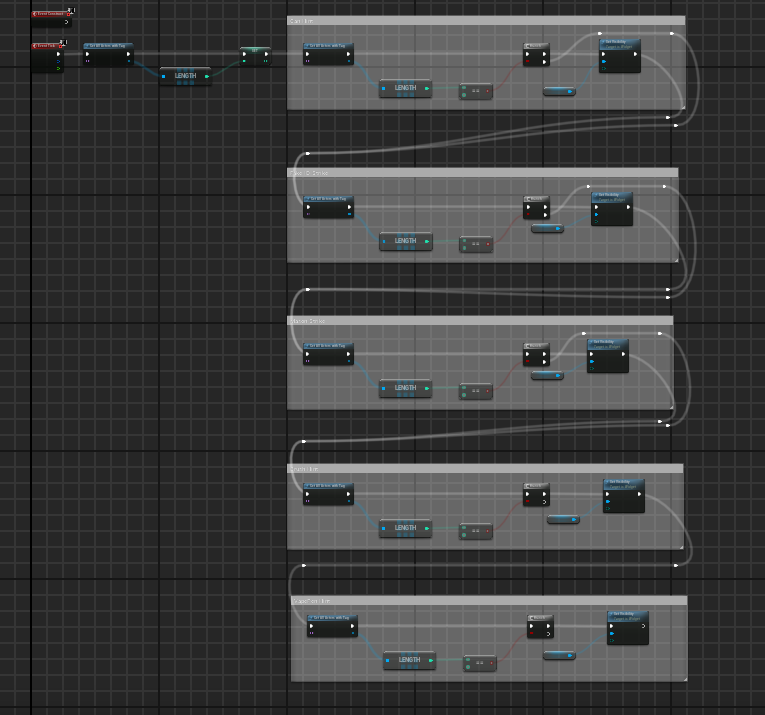Austin Edwards
Game Designer
Platform:
PC, Oculus
Tools Used:
Unreal Engine 5, Jira, Blender
Duration:
1.5 years
Team Size:
7
Role:
Lead Programmer
Quality Assurance Analyst
Game Designer
Overview:
Hidden In Plain Sight is a virtual reality project created for the North Carolina Department of Public Safety that helps equip parents, schools, and community leaders with the knowledge to recognize signs of risky behavior in teens and young adults, part of the North Carolina DARE program.
It reveals hidden dangers in everyday items, from concealed narcotics to alcohol and paraphernalia, helping communities stay informed and proactive.
Role Info
Lead Programmer:
-
Developed Unreal Engine Blueprints and integrate C++ to enhance VR educational content on substance use
-
Built modular interactive systems and media elements to support dynamic storytelling and player engagement
-
Customized Unreal Engine features to improve VR comfort, accessibility, and information delivery based on feedback
-
Led collaboration across Design, Art, Programming, and QA, increasing production speed by 50%
-
Maintained version control and ensured stable integration across departments for consistent development
Quality Assurance Analyst:
-
Tested interactive VR simulations using Unreal Engine to assess learning outcomes and player behavior
-
Evaluated user metrics and created interaction logs to refine UX and verify experience effectiveness
-
Coordinated with cross-functional teams to deliver polished builds and resolve key technical issues
-
Logged bugs, documented performance data, and tracked user interactions to support QA reporting
-
Identified and reported UX issues and gameplay bugs through thorough exploratory testing
Game Designer:
-
Designed VR gameplay systems in Unreal using Blueprints and C++ to support client educational goals
-
Created interactive mechanics and modular assets to support player-driven storytelling and exploration
-
Applied user feedback and behavior data to refine core gameplay loops and improve player engagement
-
Balanced accessibility and challenge in VR interactions to support a wide range of user comfort levels
-
Collaborated with design, art, and programming teams to align mechanics and appearance to client needs
Creating the Hide System
Overview:
I designed and programmed the majority of interactive elements within the VR experience, with the Hide System serving as the central gameplay and educational mechanic. Players were placed in a VR room and tasked with locating a concealed "Hide", which is a hidden container often used to hide drugs and other substances. This system challenged players to apply knowledge gained earlier in the DARE program to identify and access the Hide, which then revealed additional contextual information about its contents and real-life implications, reinforcing key learning objectives through interactive discovery.
Design Goals
-
Develop a modular, reusable system to support future iteration and ease of integration by other developers
-
Encourage knowledge application through spatial reasoning and environmental exploration
-
Create a balanced challenge level that grows with player familiarity and understanding
-
Integrate visual and interactive feedback to guide discovery and reinforce learning
-
Support educational outcomes by rewarding critical thinking and informed decision-making

This system is the parent system that all hides used within the experience. It calculated how a hide was grabbed and would provide UI information.

The audio cube is the primary method used for any in game audio within the experience. It was primarily responsible for player guidance.

The whiteboard is the primary way in which the player can track their progress and received help if needed. It provided hints about hides.

The video cube was designed for future development depending on client needs. It would allow for the client to provide video for extra information and guidance.





